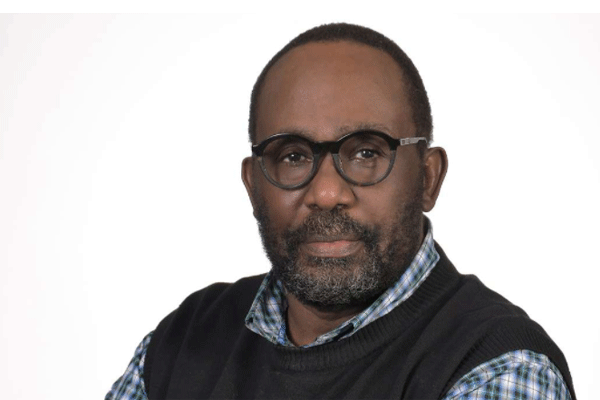Prime
Where have Uganda’s good political women gone?

Author: Charles Onyango Obbo. PHOTO/FILE
What you need to know:
- "In the last few months, we have heard many people lamenting that the hope they had that women leaders were more honest, and would save Uganda, has crashed”
Amidst the Covid-19 corruption, the Uganda Airlines scandals, and other thefts of land and public goods, something disheartening has happened. In the last few months, we have heard many people lamenting that the hope they had that women leaders were more honest, and would save Uganda, has crashed. The women are as corrupt, if not more so, than the men.
In today’s social media frenzied times, many might wonder when it was that women were held up as Uganda’s saviours. Their golden age has to be the period between 1989 (with the queue voting), through the Constituent Assembly (1994-1995), and from 1996 after the first universal suffrage election of the NRM era, to 2001. Reflecting on it today, it is remarkable how they pulled it off.
For starters, it was an alliance of older, calmer, prestigious female politicians with history (like Rhoda Kalema, “the Mother of the Uganda Parliament) and a slightly younger crop that had won their plaudits in the NRA bush war like Gertrude Njuba, Janet Mukwaya, Olive Zizinga. From the East was Gertrude Kulany, from Kapchorwa, a soft-spoken but formidable and tactical campaigner against female genital mutilation (FGM).
The prominent non-NRM leader in that cohort was UPC Iron Lady Cecilia Ogwal. They were progressive and, barring Ogwal, primarily quiet in how they went about pushing their agendas. Then, there were the firebrands; Winnie Byanyima, Maria Matembe, Beatrice Kiraso, Easther Opoti Dhugira from Nebbi, and women rights activist Tezira Jamwa from Tororo, to name a few. People like Victoria Sekitoleko often complemented them. Part of their strength came from the brute intellectual force they brought to politics and debate in the Legislature. They led on many of the censure motions against powerful ministers in the government of the time. Operating in a time when multiparty politics was still restricted, they were still able to form cross-country networks, travelling to political and grassroots events of their peers to help them build local support. A lot of progressive legislation; from the reform of laws on rape to winning budget lines for children and women’s causes across also sectors emerged from this cohort. It was a time when the NRM was a little self-assured and idealist and had some level of internal democracy that allowed contending tendencies to exist and have policy and political tug of wars.
These leaders, Byanyima, Opoti, Jamwa, and others, went on to form the very successful women’s political rights organisation Forum for Women in Democracy (FOWODE).
Then, everything changed. First, where there were previously divergent ideological tendencies within the NRM, we had the emergence of godfathers in the Movement. Where once candidates for Parliament (especially female ones) were Movement candidates, now they came through as the preferred candidates of an NRM overlord or the LC5 chairman.
In 2005, the democracy gods answered Uganda’s prayers, and there was a return to multiparty politics. There was more open political competition, just as we had wished. But it came with a curse.
Greater competition made elections more expensive, and the overwhelming majority of successful politicians were those who could raise more “logistics”. For the first, politicians were selling their cars, mortgaging their homes, and borrowing against their land titles to finance elections. If they won, they had to be corrupt to recover their costs. If they lost, they became near-lunatic NRM functionaries, taking the most extreme positions to be noticed by Kampala’s president and other party leaders. The opposition losers also did the same. They began criticising their party leaders for being out of touch, for having misled them and turned into the most strident haters of their party in the hope that the NRM would reward them for their betrayal.
This increased political competition also led to the rise of the local thug. In the first two general elections, the business of beating down the opposition was fairly centralised, managed by Major Kakooza Mutale and his mobile Kiboko Squad.
Soon Mutale was out of work, and the Kiboko Squad became decentralised and democratised. With the migration to Kampala from the west and marshlands of Buganda by eastern young men, women took over and became the most militant leaders of the NRM voting “winning” machine– especially in parts of the country hit by migration. These women leaders then came to Kampala (Parliament) victorious and got rewarded by President Yoweri Museveni, decades into power, who privileged militants willing to break bones to keep him in control, than those who would waste time soothing voters endlessly with lullabies about the good old days of the NRM.
And so it is that today, Ugandan female and male politicians stand shoulder to shoulder, equal in their infamy. Someone like Rhoda Kalema or Esther Opoti would look like an alien who lost their way and wandered into the HouseZ.
Mr Onyango-Obbo is a journalist,
writer and curator of the “Wall of Great Africans”. Twitter@cobbo3





